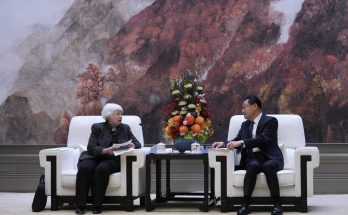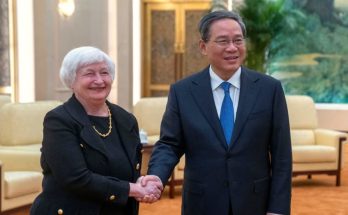By Tvara Misra
As the cherry blossom season starts in East Asia, a perennial debate has been raked up, this time with an added claimant over the birthplace of the popular sakura (cherry) trees. A Chinese industrial group has asserted that it is the Middle Kingdom, not Japan (with which the flower is traditionally associated) or South Korea (which has often claimed that its Jeju Island is the place of origin).
While the debate may remain inconclusive, with ancient monographs, genetic records, science and myth, all pointing either way, the puzzle is not in finding the native land of the cherry blossom, but rather in finding what is it that makes the debate endure, and what incites public passion on either side.
Forging National Identities

One way to look at it would to see the importance of symbols and symbolism in constructing social meaning and a societal identity (in this case, a national identity). The intangible becomes an integral way of life — one which we identify with ourselves and our cohorts, which gives us a sense of belonging; of sharing not only houses and cities, but worldviews and ways of life. Symbolism has always been integral to the project of nation building (recall nations as Anderson’s “imagined communities”). This has constantly needed rallying points for individuals to come together for realising and accepting (imagined or actual) shared heritage. One time-tested example is the flag. An excellent satire by comedian Eddie Izzard on the topic provokes one to think about why a piece of cloth symbolises arouses such emotion.
 Cherry blossoms & Japanese cultural identity
Cherry blossoms & Japanese cultural identity
Cherry blossoms have a unique place in the Japanese society, which has guarded its traditions (tea ceremony, flower arrangements, origami) closely in the face of onslaught of Westernization, especially since the US occupation post World War II. The period over which the trees blossom sees a spate of traditional activities and festivities (much like monsoons in India). Reflecting its continued popularity, sakura zensen, a record of the cherry blossom front, is done by the meteorological department for forecasting blooming days across various provinces (the blossoms start from the south and move north over April and May), is a regular news feature.
The flowers symbolise the ephemeral nature of life, and the constant cycle of birth and death. Hanami, or flower viewing, is a centuries-old tradition when people picnic outdoors enjoying the beautiful blossoms, welcoming new life after a harsh winter. Holding such gatherings in cemeteries, where cherry blossoms are specially planted, is one way of paying respects to ancestors, of celebrating life with the departed. Interestingly, it was not always the cherry tree flowers, but earlier the plum flowers, which were more popular, but around a thousand years ago, the imperial court started giving importance to the cherry blossoms.
Apart from featuring prominently on Japanese handicrafts, the tree even featured in Japan’s public diplomacy, when Japan gifted about 2000 cherry blossom trees to the US in the early 1912, which now line the Tidal Basin front in Washington. Japan also gifted China about 200 trees as well in the 1970s, when diplomatic relations were re-established.
Japan’s China complex
 Japan has always had a China-complex with regard to cultural imports, which has been occurring over several centuries (calligraphy and Kanji are Chinese exports). China has had been a sort of cultural hegemon in the East Asia, and Chinese influences are imprinted in ceremonies and value systems across East Asia. The China-Japan relations, especially in the modern era, have always been viewed through the lens of historiography, where atrocities of the Japanese occupation during the second world war have been kept alive through lived memories, unresolved issues (apology over Nanjing Massacre, comfort women rehabilitation) and often fanned by burgeoning nationalism (as shown by strong reactions over Yasakuni shrine visits).
Japan has always had a China-complex with regard to cultural imports, which has been occurring over several centuries (calligraphy and Kanji are Chinese exports). China has had been a sort of cultural hegemon in the East Asia, and Chinese influences are imprinted in ceremonies and value systems across East Asia. The China-Japan relations, especially in the modern era, have always been viewed through the lens of historiography, where atrocities of the Japanese occupation during the second world war have been kept alive through lived memories, unresolved issues (apology over Nanjing Massacre, comfort women rehabilitation) and often fanned by burgeoning nationalism (as shown by strong reactions over Yasakuni shrine visits).
Given its revered place in Japan’s cultural system, and acerbic relationship with China on the cultural front, China’s attempt at appropriation of the cherry blossom is often taken as assault on national identity (imagine the backlash from India, if say Pakistan says that yoga has its roots on the other side of the border). Group identities are an integral part of our being in the world, and often intangibles (such as concepts of honor, apology, food), have a potent emotional resonance to rake up political storms. Call it flowering feuds if you like: cherry blossom wars are here to stay.
Author Profile
- India Writes Network (www.indiawrites.org) is an emerging think tank and a media-publishing company focused on international affairs & the India Story. Centre for Global India Insights is the research arm of India Writes Network. To subscribe to India and the World, write to editor@indiawrites.org. A venture of TGII Media Private Limited, a leading media, publishing and consultancy company, IWN has carved a niche for balanced and exhaustive reporting and analysis of international affairs. Eminent personalities, politicians, diplomats, authors, strategy gurus and news-makers have contributed to India Writes Network, as also “India and the World,” a magazine focused on global affairs.
Latest entries
 In ConversationJuly 26, 2024India-Italy defence collaboration can extend to third countries: Anil Wadhwa
In ConversationJuly 26, 2024India-Italy defence collaboration can extend to third countries: Anil Wadhwa In ConversationJuly 23, 2024Italy views India as a key partner in Indo-Pacific: Vani Rao
In ConversationJuly 23, 2024Italy views India as a key partner in Indo-Pacific: Vani Rao DiplomacyJune 29, 2024First BRICS unveils a roadmap for boosting tourism among emerging economies
DiplomacyJune 29, 2024First BRICS unveils a roadmap for boosting tourism among emerging economies India and the WorldJune 11, 2024On Day 1, Jaishankar focuses on resolving standoff with China
India and the WorldJune 11, 2024On Day 1, Jaishankar focuses on resolving standoff with China






